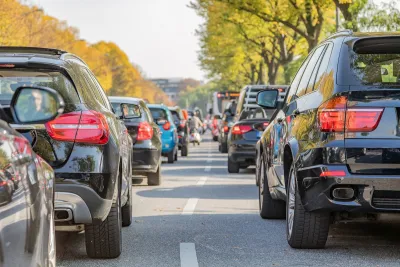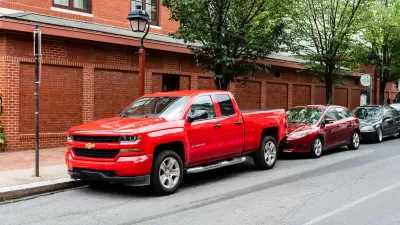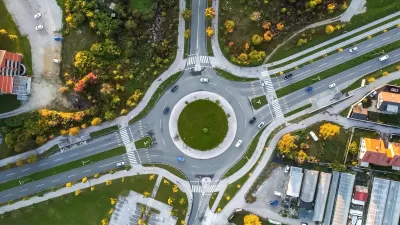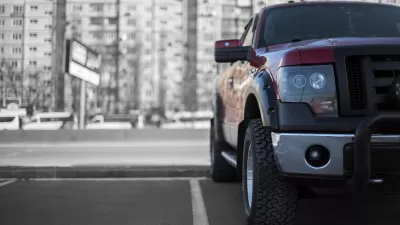New research links large SUVs to lower traffic throughput.

New research links large SUVs to increased traffic congestion, reports David Zipper in Bloomberg CityLab. This is because larger vehicles reduce the capacity of driving lanes, according to researchers from the University of Sydney and the University of Hong Kong. “Their findings suggest yet another way in which ‘car bloat’ exacerbates problems that affect everyone, regardless of how they travel,” Zipper writes.
While road safety advocates have been sounding the alarm about large trucks and SUVs for years, the new study adds a new dimension to its assessment of the impacts of larger cars: “They examined whether expanding vehicle size is limiting ‘throughput,’ the maximum number of vehicles that can move through a lane in an hour.” The study found that in Minneapolis and St. Paul, more SUVs reduced the capacity of freeway lanes by almost 10 percent between 1995 and 2019.
Car bloat has other negative externalities that land on society rather than owners, including higher greenhouse gas emissions, faster deterioration of road pavement, reduced on-street parking capacity, and increased tire pollution.
According to the article, “The share of new car sales comprised by SUVs and pickups has leapt from less than one in four during the 1970s to roughly four in five today.” And while larger cars may offer perceived safety benefits to their passengers, a study from The Economist found that the largest 1 percent of vehicles killed 12 people in collisions for every one life saved.
FULL STORY: How SUVs Are Making Traffic Worse

Alabama: Trump Terminates Settlements for Black Communities Harmed By Raw Sewage
Trump deemed the landmark civil rights agreement “illegal DEI and environmental justice policy.”

Planetizen Federal Action Tracker
A weekly monitor of how Trump’s orders and actions are impacting planners and planning in America.

The 120 Year Old Tiny Home Villages That Sheltered San Francisco’s Earthquake Refugees
More than a century ago, San Francisco mobilized to house thousands of residents displaced by the 1906 earthquake. Could their strategy offer a model for the present?

In Both Crashes and Crime, Public Transportation is Far Safer than Driving
Contrary to popular assumptions, public transportation has far lower crash and crime rates than automobile travel. For safer communities, improve and encourage transit travel.

Report: Zoning Reforms Should Complement Nashville’s Ambitious Transit Plan
Without reform, restrictive zoning codes will limit the impact of the city’s planned transit expansion and could exclude some of the residents who depend on transit the most.

Judge Orders Release of Frozen IRA, IIJA Funding
The decision is a victory for environmental groups who charged that freezing funds for critical infrastructure and disaster response programs caused “real and irreparable harm” to communities.
Urban Design for Planners 1: Software Tools
This six-course series explores essential urban design concepts using open source software and equips planners with the tools they need to participate fully in the urban design process.
Planning for Universal Design
Learn the tools for implementing Universal Design in planning regulations.
Clanton & Associates, Inc.
Jessamine County Fiscal Court
Institute for Housing and Urban Development Studies (IHS)
City of Grandview
Harvard GSD Executive Education
Toledo-Lucas County Plan Commissions
Salt Lake City
NYU Wagner Graduate School of Public Service





























